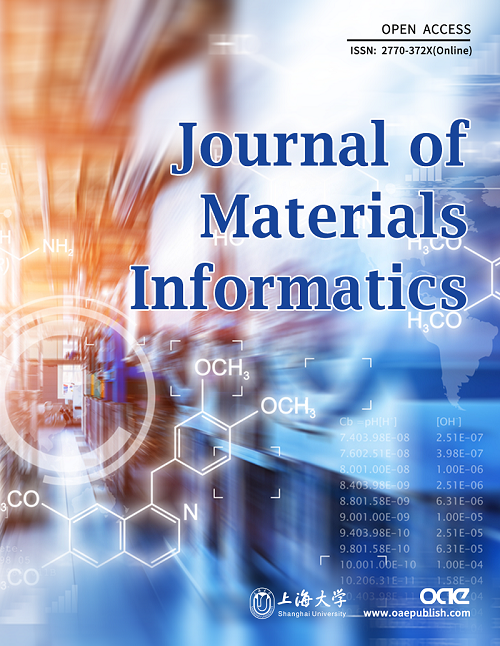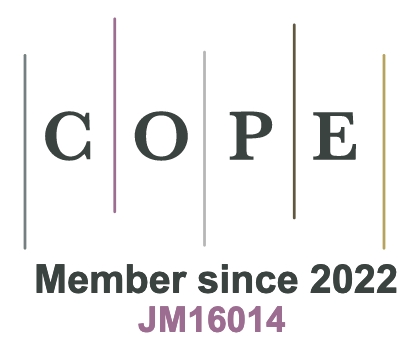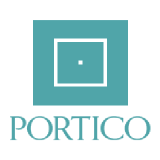REFERENCES
1. Oganov AR, Glass CW. Crystal structure prediction using ab initio evolutionary techniques: principles and applications. J Chem Phys 2006;124:244704.
2. Oganov AR, Pickard CJ, Zhu Q, Needs RJ. Structure prediction drives materials discovery. Nat Rev Mater 2019;4:331-48.
3. Hu J, Yang W, Dong R, et al. Contact map based crystal structure prediction using global optimization. CrystEngComm 2021;23:1765-76.
4. Yin X, Gounaris CE. Search methods for inorganic materials crystal structure prediction. Curr Opin Chem Eng 2022;35:100726.
5. Brown N, Ertl P, Lewis R, Luksch T, Reker D, Schneider N. Artificial intelligence in chemistry and drug design. J Comput Aided Mol Des 2020;34:709-15.
6. Kvashnin AG, Allahyari Z, Oganov AR. Computational discovery of hard and superhard materials. J Appl Phys 2019;126:040901.
7. Noh J, Kim J, Stein HS, et al. Inverse design of solid-state materials via a continuous representation. Matter 2019;1:1370-84.
8. Kim B, Lee S, Kim J. Inverse design of porous materials using artificial neural networks. Sci Adv 2020;6:eaax9324.
9. Dan Y, Zhao Y, Li X, Li S, Hu M, Hu J. Generative adversarial networks (GAN) based efficient sampling of chemical composition space for inverse design of inorganic materials. npj Comput Mater 2020;6:84.
10. Long T, Fortunato NM, Opahle I, et al. Constrained crystals deep convolutional generative adversarial network for the inverse design of crystal structures. npj Comput Mater 2021;7:66.
11. Oviedo F, Ren Z, Sun S, et al. Fast and interpretable classification of small X-ray diffraction datasets using data augmentation and deep neural networks. npj Comput Mater 2019;5:60.
12. Pickard CJ, Needs RJ. Ab initio random structure searching. J Phys Condens Matter 2011;23:053201.
13. Woodley SM, Catlow R. Crystal structure prediction from first principles. Nat Mater 2008;7:937-46.
14. Glass CW, Oganov AR, Hansen N. USPEX - evolutionary crystal structure prediction. Comput Phys Commun 2006;175:713-20.
15. Wang Y, Lv J, Zhu L, Ma Y. CALYPSO: a method for crystal structure prediction. Comput Phys Commun 2012;183:2063-70.
17. Sham LJ, Kohn W. One-particle properties of an inhomogeneous interacting electron gas. Phys Rev 1966;145:561-7.
18. Xie T, Grossman JC. Crystal graph convolutional neural networks for an accurate and interpretable prediction of material properties. Phys Rev Lett 2018;120:145301.
19. Chen C, Ye W, Zuo Y, Zheng C, Ong SP. Graph networks as a universal machine learning framework for molecules and crystals. Chem Mater 2019;31:3564-72.
20. Schütt KT, Sauceda HE, Kindermans PJ, Tkatchenko A, Müller KR. SchNet - a deep learning architecture for molecules and materials. J Chem Phys 2018;148:241722.
21. Park CW, Wolverton C. Developing an improved crystal graph convolutional neural network framework for accelerated materials discovery. Phys Rev Mater 2020;4:063801.
22. Omee SS, Louis SY, Fu N, et al. Scalable deeper graph neural networks for high-performance materials property prediction. Patterns 2022;3:100491.
23. Choudhary K, Decost B. Atomistic Line Graph Neural Network for improved materials property predictions. npj Comput Mater 2021;7:185.
24. Kirkpatrick S, Gelatt CD Jr, Vecchi MP. Optimization by simulated annealing. Science 1983;220:671-80.
25. Pannetier J, Bassas-Alsina J, Rodriguez-Carvajal J, Caignaert V. Prediction of crystal structures fromcrystal chemistry rules by simulated annealing. Nature 1990;346:343-5.
26. Schön JC, Jansen M. First step towards planning of syntheses in solid‐state chemistry: determination of promising structure candidates by global optimization. Angew Chem Int Ed Engl 1996;35:1286-304.
28. Martoňák R, Laio A, Bernasconi M, et al. Simulation of structural phase transitions by metadynamics. Z für Krist Cryst Mater 2009;458:182-5.
29. Wales DJ, Doye JPK. Global optimization by basin-hopping and the lowest energy structures of lennard-jones clusters containing up to 110 atoms. J Phys Chem A 1997;101:5111-6.
30. Wales DJ, Scheraga HA. Global optimization of clusters, crystals, and biomolecules. Science 1999;285:1368-72.
31. Goedecker S. Minima hopping: an efficient search method for the global minimum of the potential energy surface of complex molecular systems. J Chem Phys 2004;120:9911-7.
32. Smith RW. Energy minimization in binary alloy models via genetic algorithms. Phys Commun 1992;71:134-46.
33. Woodley SM, Battle PD, Gale JD, Catlow CRA. The prediction of inorganic crystal structures using a genetic algorithm and energy minimisation. Phys Chem Chem Phys 1999;1:2535-42.
34. Lyakhov AO, Oganov AR, Stokes HT, Zhu Q. New developments in evolutionary structure prediction algorithm USPEX. Comput Phys Commun 2013;184:1172-82.
35. Yamashita T, Sato N, Kino H, Miyake T, Tsuda K, Oguchi T. Crystal structure prediction accelerated by Bayesian optimization. Phys Rev Mater 2018;2:013803.
36. Cheng G, Gong XG, Yin WJ. Crystal structure prediction by combining graph network and optimization algorithm. Nat Commun 2022;13:1492.
37. Ryan K, Lengyel J, Shatruk M. Crystal structure prediction via deep learning. J Am Chem Soc 2018;140:10158-68.
38. Hu J, Zhao Y, Li Q, et al. Deep learning-based prediction of contact maps and crystal structures of inorganic materials. ACS Omega 2023;8:26170-9.
39. Kresse G, Furthmüller J. Efficiency of ab-initio total energy calculations for metals and semiconductors using a plane-wave basis set. Comput Mater Sci 1996;6:15-50.
40. Soler JM, Artacho E, Gale JD, et al. The SIESTA method for ab initio order- N materials simulation. J Phys Condens Matter 2002;14:2745.
41. Hautier G, Fischer C, Ehrlacher V, Jain A, Ceder G. Data mined ionic substitutions for the discovery of new compounds. Inorg Chem 2011;50:656-63.
42. Wei L, Fu N, Siriwardane EMD, et al. TCSP: a template-based crystal structure prediction algorithm for materials discovery. Inorg Chem 2022;61:8431-9.
43. Kusaba M, Liu C, Yoshida R. Crystal structure prediction with machine learning-based element substitution. Comput Mater Sci 2022;211:111496.
44. Senior AW, Evans R, Jumper J, et al. Improved protein structure prediction using potentials from deep learning. Nature 2020;577:706-10.
45. Jumper J, Evans R, Pritzel A, et al. Highly accurate protein structure prediction with AlphaFold. Nature 2021;596:583-9.
46. Baek M, DiMaio F, Anishchenko I, et al. Accurate prediction of protein structures and interactions using a three-track neural network. Science 2021;373:871-6.
47. Wei L, Li Q, Omee SS, Hu J. Towards quantitative evaluation of crystal structure prediction performance. Comput Mater Sci 2024;235:112802.
48. Podryabinkin EV, Tikhonov EV, Shapeev AV, Oganov AR. Accelerating crystal structure prediction by machine-learning interatomic potentials with active learning. Phys Rev B 2019;99:064114.
49. Tong Q, Xue L, Lv J, Wang Y, Ma Y. Accelerating CALYPSO structure prediction by data-driven learning of a potential energy surface. Faraday Discuss 2018;211:31-43.
50. Takamoto S, Izumi S, Li J. TeaNet: Universal neural network interatomic potential inspired by iterative electronic relaxations. Comput Mater Sci 2022;207:111280.
51. Takamoto S, Shinagawa C, Motoki D, et al. Towards universal neural network potential for material discovery applicable to arbitrary combination of 45 elements. Nat Commun 2022;13:2991.
52. Choudhary K, Decost B, Major L, Butler K, Thiyagalingam J, Tavazza F. Unified graph neural network force-field for the periodic table: solid state applications. Digit Discov 2023;2:346-55.
53. Chen C, Ong SP. A universal graph deep learning interatomic potential for the periodic table. Nat Comput Sci 2022;2:718-28.
54. Deng B, Zhong P, Jun K, et al. CHGNet as a pretrained universal neural network potential for charge-informed atomistic modelling. Nat Mach Intell 2023;5:1031-41.
55. Shao X, Lv J, Liu P, et al. A symmetry-orientated divide-and-conquer method for crystal structure prediction. J Chem Phys 2022;156:014105.
56. Hahn T, Shmueli U, Arthur JCW. International tables for crystallography. 1983. Available from: https://it.iucr.org/. [Last accessed on 22 Feb 2024].
57. Deb K, Jain H. An evolutionary many-objective optimization algorithm using reference-point-based nondominated sorting approach, part Ⅰ: solving problems with box constraints. IEEE Trans Evol Computat 2014;18:577-601.
58. Jain H, Deb K. An evolutionary many-objective optimization algorithm using reference-point based nondominated sorting approach, part Ⅱ: handling constraints and extending to an adaptive approach. IEEE Trans Evol Computat 2014;18:602-22.
59. Schmidt MD, Lipson H. Age-fitness pareto optimization. In: Proceedings of the 12th Annual Conference on Genetic and Evolutionary Computation. New York, NY, USA: Association for Computing Machinery; 2010. pp. 543-4.
60. Isayev O, Oses C, Toher C, Gossett E, Curtarolo S, Tropsha A. Universal fragment descriptors for predicting properties of inorganic crystals. Nat Commun 2017;8:15679.
61. Cheng J, Zhang C, Dong L. A geometric-information-enhanced crystal graph network for predicting properties of materials. Commun Mater 2021;2:92.
62. Yan K, Liu Y, Lin Y, Ji S. Periodic graph transformers for crystal material property prediction. arXiv. [Preprint. ] Sep 23, 2022[accessed 2024 Feb 22]. Available from: https://arxiv.org/abs/2209.11807.
63. Hu J, Goodman E, Seo K, Fan Z, Rosenberg R. The hierarchical fair competition (HFC) framework for sustainable evolutionary algorithms. Evol Comput 2005;13:241-77.
64. Hornby GS. ALPS: the age-layered population structure for reducing the problem of premature convergence. In: Proceedings of the 8th Annual Conference on Genetic and Evolutionary Computation. New York, NY, USA: Association for Computing Machinery; 2006; pp. 815-22. 2006.
65. Schmidt M, Lipson H. Age-fitness pareto optimization. In: Riolo R, Mcconaghy T, Vladislavleva E, editors. Genetic programming theory and practice VⅢ. New York, NY, USA: Springer; 2011. pp. 129-46.
66. Deb K, Pratap A, Agarwal S, Meyarivan T. A fast and elitist multiobjective genetic algorithm: Nsga-Ⅱ. IEEE Trans Evol Comput 2002;6:182-97.
67. Blank J, Deb K, Roy PC. Investigating the normalization procedure of NSGA-Ⅲ. Available from: https://www.egr.msu.edu/~kdeb/papers/c2018009.pdf. [Last accessed on 25 Mar 2024]
68. Jain A, Ong SP, Hautier G, et al. Commentary: The materials project: a materials genome approach to accelerating materials innovation. APL Mater 2013;1:011002.
69. Bergstra J, Yamins D, Cox D. Making a science of model search: hyperparameter optimization in hundreds of dimensions for vision architectures. In: Proceedings of the 30th International Conference on Machine Learning. Atlanta, Georgia, USA: PMLR; 2013. pp. 115-23. Available from: https://proceedings.mlr.press/v28/bergstra13.html. [Last accessed on 22 Feb 2024].
70. van der Maaten L, Hinton G. Visualizing data using t-SNE. 2008. Available from: https://www.jmlr.org/papers/volume9/vandermaaten08a/vandermaaten08a.pdf. [Last accessed on 22 Feb 2024].








